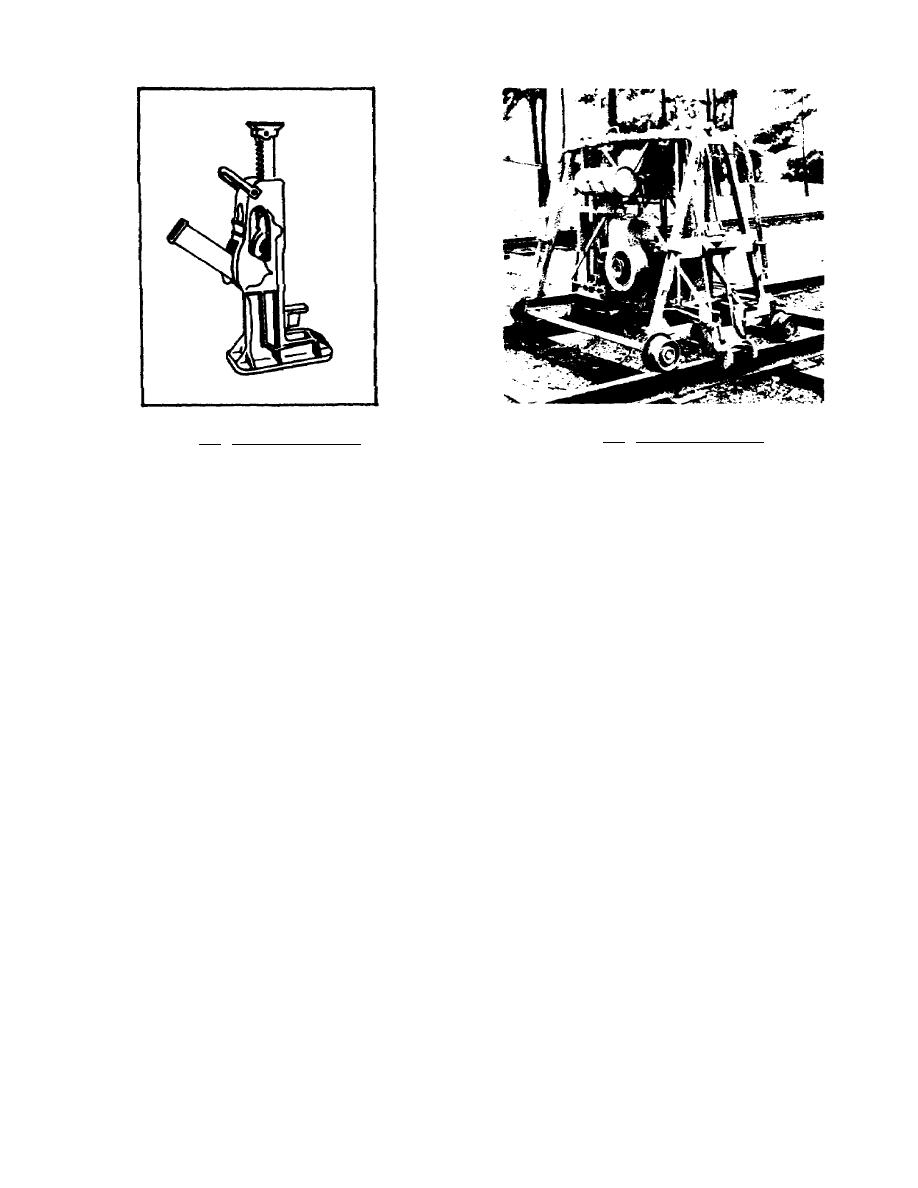
Figure 1.6. Rail-Mounted Jack.
Figure 1.5. Ratchet-Type Jack.
When one rail has been raised to proper height with the spot board, the adjacent rail can be brought to
proper surface by using the track level. Then the spot board is moved on to the next grade stake and the process
repeated.
1.6.
PLANNING
Together the track supervisor and the track foreman must estimate the length of track that can be raised
in 1 day. This is based on the number of men in the surfacing gang, the type of tools, the type of ballast, the
amount of raise, and the skill of the crew. In a theater, you will ordinarily have only the handtools in
Maintenance-of-Way Tool Set No. 4. The set includes track shovels, ballast forks, tamping bars, picks, track
jacks, and spot board equipment, shown in figure 1.7. However, if you have such power tools as the pneumatic
and electric tampers shown in figures 1.8 and 1.9, your surfacing work will move along much faster.
1.7.
CALCULATING THE AMOUNT OF BALLAST
After figuring the length of track to be surfaced in a day, the track supervisor and the track foreman can
estimate, based on experience, the amount of ballast required. Or they can calculate the amount by multiplying
the width of ballast section by the projected raise and then by the length. In calculating, they are careful that all
dimensions are expressed in the same units. For example, if the
11



 Previous Page
Previous Page
